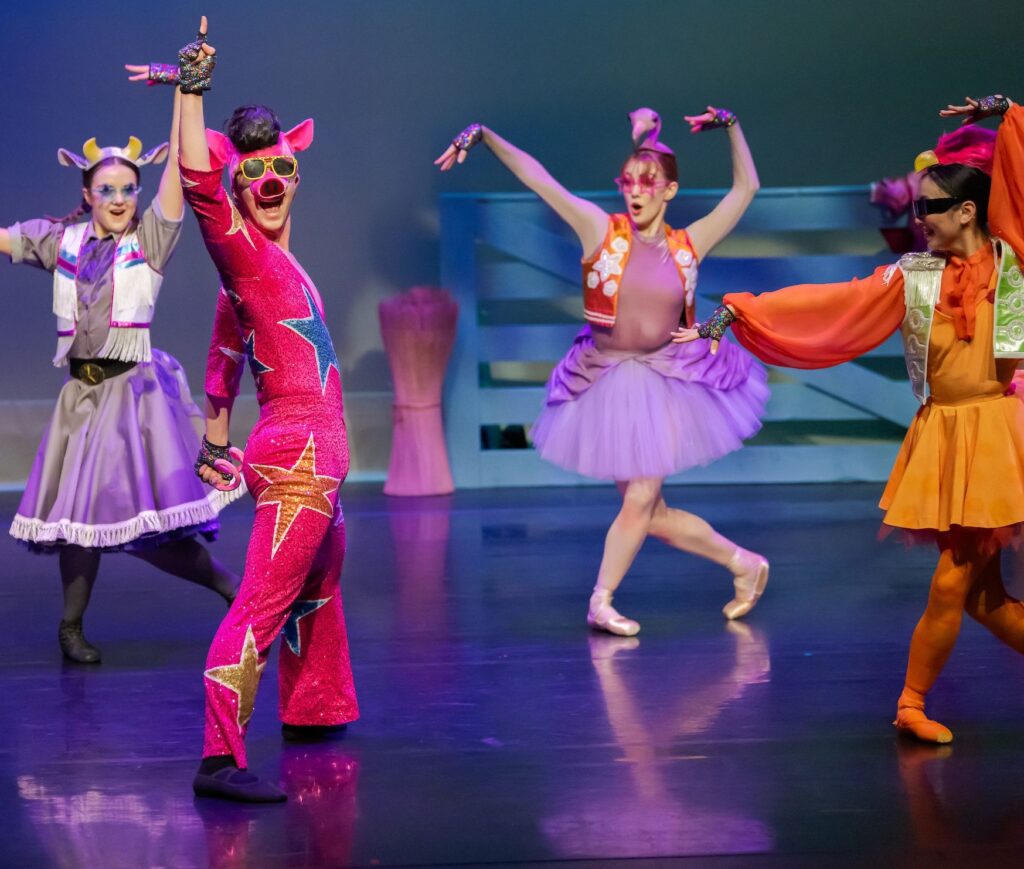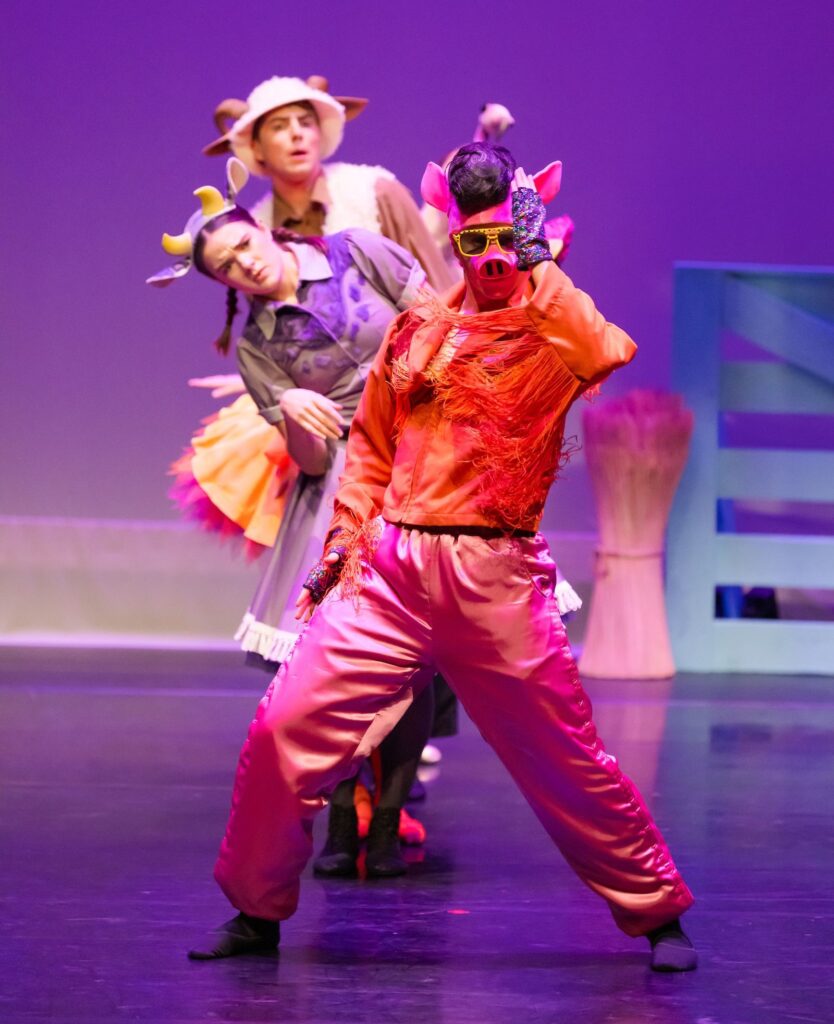Dazzlehands
Royal New Zealand Ballet
St.James Theatre, Wellington
Photo credits: Stephen A’Court

It’s school holidays, so take the book Dazzlehands by local children’s writer Sacha Cotter and illustrator Josh Morgan then adapt it for performance. The protagonist is a dancing pig, so you’re halfway there already.
Choreography by RNZB company dancer, Joshua Guillemot-Rodgerson,is cheeky and his use of repeated action motifs cleverly echoes the rhythms in the text. The sassy dancers at RNZB step up to develop the characters in the farmyard and they relish the chance to play the silly card. Most of the animals conform to expectations, but Pig is the exception.
The work is set to music by local composer William Philipson, with narration stitched in. Costumes designed by Victoria Gridley are up and over the top. Fill the theatre with little ones and their older significant others, and you can’t really go wrong.
In saying that it’s worth acknowledging how much work goes into theadaptation of any work from one genre to another, then co-ordinating all the elements of such a project in a way that still honours the original. Just because the book is for children doesn’t mean it’s childish work. The theatre can work for all ages but you have to know how to play that.
There are sold out seasons of Dazzlehands in various venues, with a te reo narration, a deaf-signed and relaxed performances included. Huia are the country’s leading publishers of bi-lingual books for children, and both editions of this work, in English, Dazzlehands and in te reo, Ringakõrero — are on sale in the foyer.

The story and moral of Dazzlehands allows a non-conformist character to play it his way. The farmer wants Pig to behave normally, like all the other animals do — Sheep goes Baa-aa, Cow goes Moo-oo, Hen goes Cluck and Flamingo makes a remarkable sound (a surprise to meet a flamingo on a farm anyway but why not?) The lady farmer grows increasingly frustrated when Pig keeps producing glitzy gloves and turning to disco dancing instead of obliging with an “Oink” as requested.
We’re reminded of the free-thinking family’s mantra – “Sit down wheneveryone else is standing up, stand up when everyone else is sitting down”.
Anthropomorphism is the spine of so many animal tales for children of all ages, from Aesop’s Fables, Three Little Pigs, Wind in the Willows, Beatrix Potter, Alison Uttley … not to mention the crazy romp of Norwegian rock group Ylvis in What Does the Fox Say? and the closer-to-home works by Margaret Mahy (The Lion in the Meadow would be a bobby-dazzler of a ballet), and Paul Jenden who choreographed Lynley Dodd’s Hairy Maclary tribe. It’s just two more bookshelves away to George Orwell’s Animal Farm and the metaphors at work when those farm animals unite to fight off oppression and find freedom. (Note itspublication date 1945).

All the Dazzlehands animals come to want a bit of the glitz so they learn the jazzy dancing — but Pig doesn’t really want to be like anyone else, so as they come across to follow his lead, Pig scores the last line in the play, just one word, and you don’t need me to tell you what that word is. Cotter and Morgan have produced a number of children’s book titles with Huia, including the award-winning The Bomb (that’s the swimming pool variety). It’s worth a few moments to listen to the online version of that being read and accompanied by Claire Cowan’s luminous composition for members of the New Zealand Symphony Orchestra.
There’s also a fabulous lineage of children’s story ballets within the history of RNZB’s own repertoire, all of them worth re-visiting at some stage. Russell Kerr’s productions of Carnival of the Animals, Peter and the Wolf, Alice in Wonderland and his fabulous Peter Pan are all classics. But then who could forget works Kerr made from tales by New Zealand’s stellar children’s book illustrator, Gavin Bishop. Te Maia and the Sea Devil called for a wonderful underwater setting — but at the top table is the legendary Terrible Tom which thrilled so many audiences of children who lifted the roof with delight.
I recently watched a video of this winner from 1980s, with music by Philip Norman, and was thrilled to see my memory had not exaggerated the genius of Russell Kerr, choreographer. Usually it’s a book that then becomes a ballet, but in this instance it would be a ballet that became a book. Now wouldn’t that be fun?